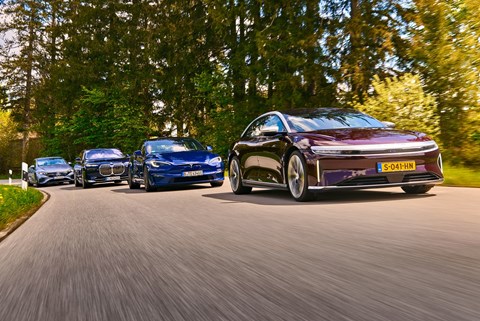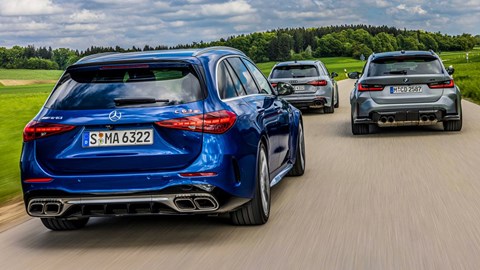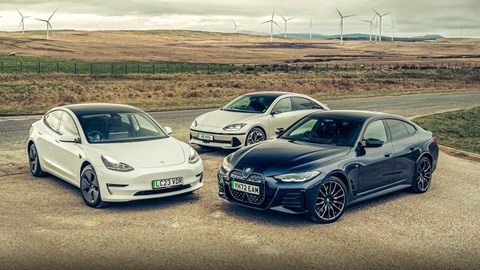► Why you can trust CAR’s verdicts
► How we rate cars, explained
► And who does the testing
At CAR Magazine, our legacy is built on cutting-edge journalism, unparalleled expertise, and fearless verdicts. Our rigorous testing process ensures every vehicle review is insightful, accurate, and unbiased.
The magazine has a history of innovation. We invented the group test, pioneered the drive story and coined the phrase ‘supercar’ – and all three remain staples of CAR. The magazine is also renowned for its photography, writing and design. From LJK Setright to Gavin Green and Georg Kacher, CAR was and still is the home of the world’s most respected automotive journalists.

Our reviews
We’re usually amongst the first (if not the first) to drive anything new or updated, with our reviews giving you the earliest opinions from our experienced team.
Over the year we drive literally hundreds of cars, SUVs, pickups and even the odd van, so we know our heroes from our howlers. All that means we can help our readers pick the right car, or at least give them a taste of some of the more exotic machinery we’re fortunate enough to sample.
How we test
Generally, we’ll always test a car abroad first on the international or European launch. Although British roads are generally far worse than what we’d experience in France, Spain, Portugal or Germany, for instance, our road testers have a keen eye for potholes and are still able to give a firm verdict.
You can usually expect a couple of hours behind the wheel here, possibly with some track or off-road action where appropriate. Routes generally have a wide range of roads, allowing us to sample the car in a variety of situations. Sometimes the car won’t be to full UK specifications, but where it matters we’ll let you know.
We’ll look to get into any important car as soon as possible in the UK after the initial launch. This is usually on another manufacturer organised launch, although frequently a car will be delivered to the office.

Ultimately, we want to know what a car is like to live with, so a week’s loan is something we’ll always try to arrange, succeeding in the vast majority of cases. Our testers are now able to use roads familiar to them to solidify their driving impressions, while day to day use soon highlights any annoying traits or poor design.
But CAR doesn’t just test stuff individually, there’s also our comparison tests. Whether it’s a straight up duel or one of our Giant Tests with three or more cars, the direct comparison makes for more accurate rankings and damn good copy.
How we rate cars
There’s all manner of things to look out for, but fitness for purpose is high on that list. Sports cars should excite, EVs need a usable range and excellent efficiency, and a luxury car should pamper its owner. You get the idea.
Performance should be appropriate for the type of car and balanced with good handling. However, this shouldn’t come at the expense of ride; a Porsche 911 GT3 is proof that even something track friendly needn’t shatter your fillings. Interiors should feel well put together, be easy to use and practicality is good, too. That said, it’s far more important on a family hauler than a mid-engined two seater.

Before we even set off we’re looking at the interior fit and finish, inspecting the infotainment and making sure there’s enough adjustment for the driver. Are the seats comfortable? Can I set the temperature easily? How does it compare to rivals? These are all questions we’re asking ourselves.
If there’s an engine to fire, we’re listening out for coarseness and feeling for unpleasant vibrations, and we’ll have the stereo off listening for other unwelcome intrusions on the move. By the time we’ve left the carpark, we’ll have a feel for the weighting and responsiveness of the controls, the suspension’s ability to soak up any bumps and how easy it is to stop smoothly.
We start gently, feeling how the car behaves in everyday driving situations in town, the countryside and motorways, too. The variety is important as something that glides down the motorway may thud and crash through potholes at 20mph. Further to ride comfort, we start to explore the performance available, keep an eye on the economy and get a feel for the handling.

On top of all that, we also have to take into account the more boring stuff like space, practicality and of course cost. That said, we’re enthusiasts at heart, so a car that’s enjoyable to drive may very well get the nod over something that’s a bit more sensible.
In terms of ratings, one star is something so abysmal it should be avoided at all costs. Two stars is awarded to a car that has some merit, but is flawed in too many other areas to recommend.

Three is for a car that’s perfectly acceptable, but doesn’t stand out in any particular area, while four is a genuinely good car you’d be delighted to own. To get the full five stars a car must be almost impossible to fault in the majority of areas or a real game-changer.
Who does our testing?
CAR is lucky enough to have a team full of experienced road testers to pick from. With years or even decades in the industry, they drive more cars over the course of 12 months than most will in a lifetime. You can read about them on our authors page.